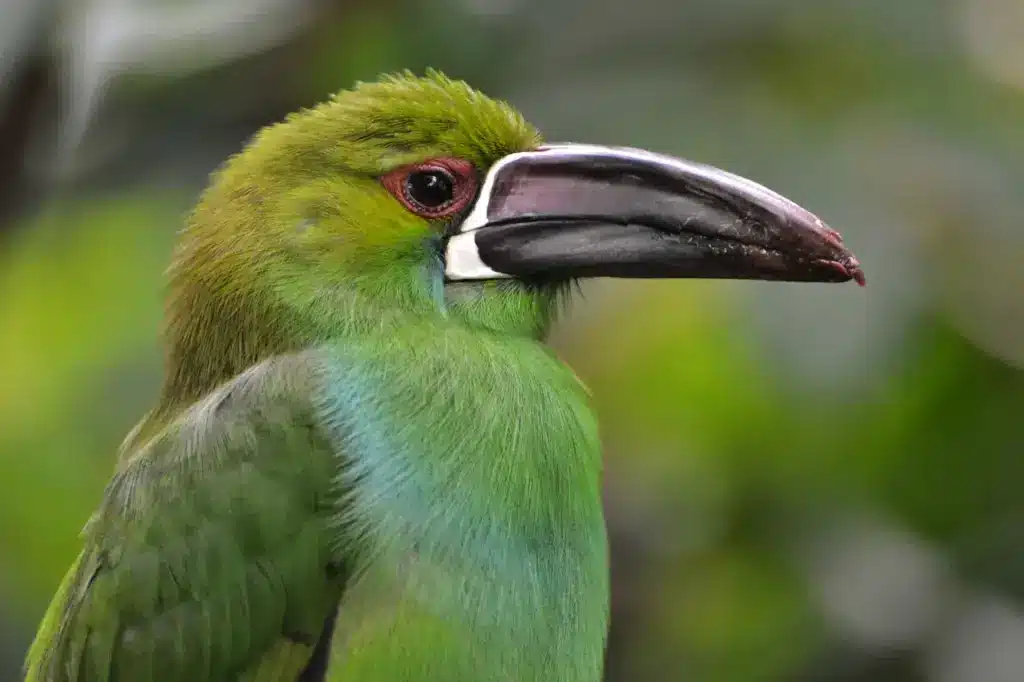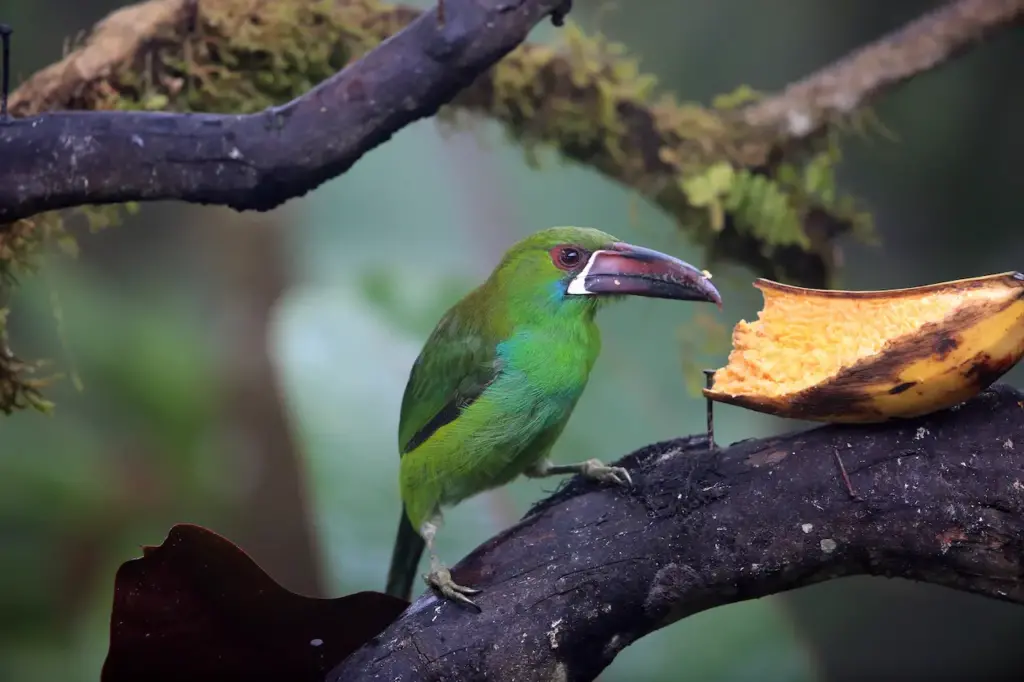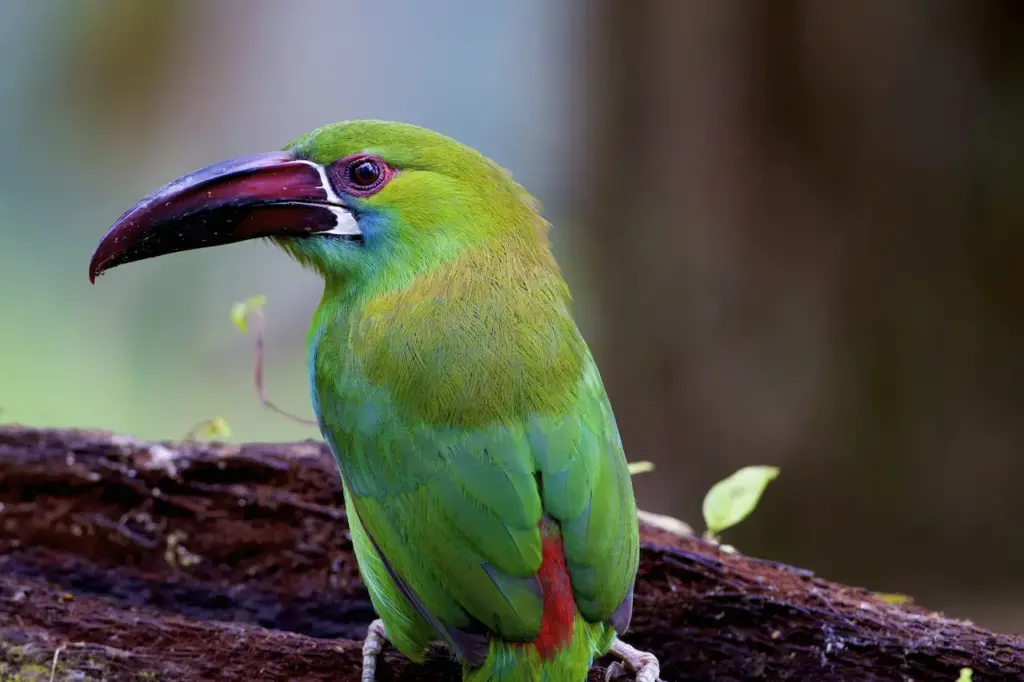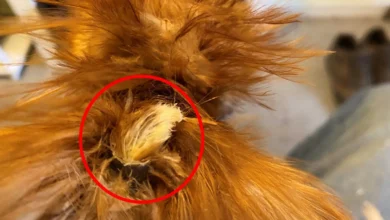The Crimson-rumped Toucanets (Aulacorhynchus haematopygus) is also known as Chestnut-billed Emerald-Toucanet, Crimson-rumped Aracaris or Red-rumped Green-Toucanet.
This South American toucanet is closely related to the Blue-banded Toucanet (Aulacorhynchus coeruleicinctis) and Yellow-browed Toucanet (Aulacorhynchus huallagae).

Alternate (Global) Names
Chinese: ????? … Czech: Arassari karmínový, arassari rudokost?ecový … Danish: Rødgumpet Tukanet … Dutch: Roodstuitarassari, Roodstuit-arassari … German: Blutbürzelarassari, Blutbürzel-Arassari … Finnish: Punaperätukaani … French: Toucanet à croupion rouge … Italian: Tucanetto groppacremisi, Tucanetto groppone rosso … Japanese: koshiakamidorichuuhashi … Norwegian: Rødgumptukan … Polish: pieprzojad czerwonorzytny … Russian: ?????????????????? ??????? … Slovak: tukaník velký … Spanish: Tucancito Culirrojo, Tucancito de Lomo Rojo, Tucanete Culirrojo, Tucanete Lomirrojo …Swedish: Rödgumpad tukanett
Distribution / Range
The Crimson-rumped Toucanets are native to the humid Andean forests in Ecuador, Colombia and Venezuela in South America.
Subspecies and Distribution:
- Aulacorhynchus haematopygus haematopygus (Gould, 1835) – Nominate Race
- Range: Found on the Andean slopes – from the Perijá Mountains in western Venezuela and north and central Colombia south to southwestern Colombia. Possibly also occur on the eastern slope of northern Ecuador.
- Aulacorhynchus haematopygus sexnotatus (Gould, 1868)
- Range: Occurs naturally in extreme southwestern Colombia south to western Ecuador.

Description
The Crimson-rumped Toucanet’s plumage is mostly green, frequently tingued blue. The rump and tail tip are maroon-red. The beak is black and maroon, with a white band at its base.
The average length is 14 inches (35 cm) – from the top of the head to the tip of the tail. The weight ranges from 5 – 8.2 oz (141-232 grams).
They are fairly long-lived with a lifespan around 20 years.
Breeding / Nesting
The mating ritual is a fun-loving affair for toucans, as they throw fruit to one another.
Like all of their other activities, nesting happens high up in hollow areas in trees. The bill is not effective for digging or any other type of extensive excavation work and so they must rely on holes already formed by other means.
The nests are not lined, but the two to four shiny white eggs that are laid each year rest on a few wood chips created while enlarging the opening or on various kinds of regurgitated seeds collected for this purpose. Parents share equally in incubation duties, but rarely sit on the nest for more than an hour at a time and the eggs are often left uncovered. Both parents share in feeding fruit to the babies for up to 8 weeks.

After 16 days the nestlings are born blind, with no trace of down on their pink skin. The bill is unremarkable until about 16 days old when it takes on the distinguishing features of the toucan, and requires up to four months to develop fully. Feathers begin to expand at 4 weeks.
Babies have pads on their elbows that protect their feet by keeping them elevated until they fledge.
Breeding in captivity requires attention to a number of details. Even successful breeders report rates as low as 30% for the incubation of eggs.
Beauty Of Birds strives to maintain accurate and up-to-date information; however, mistakes do happen. If you would like to correct or update any of the information or even submit an article or pictures, please contact us. THANK YOU!!!



